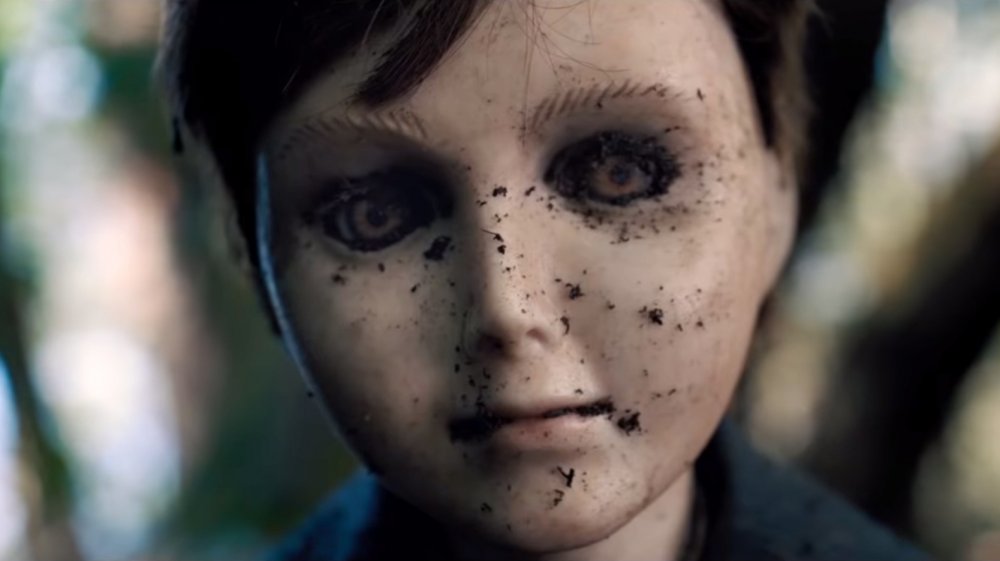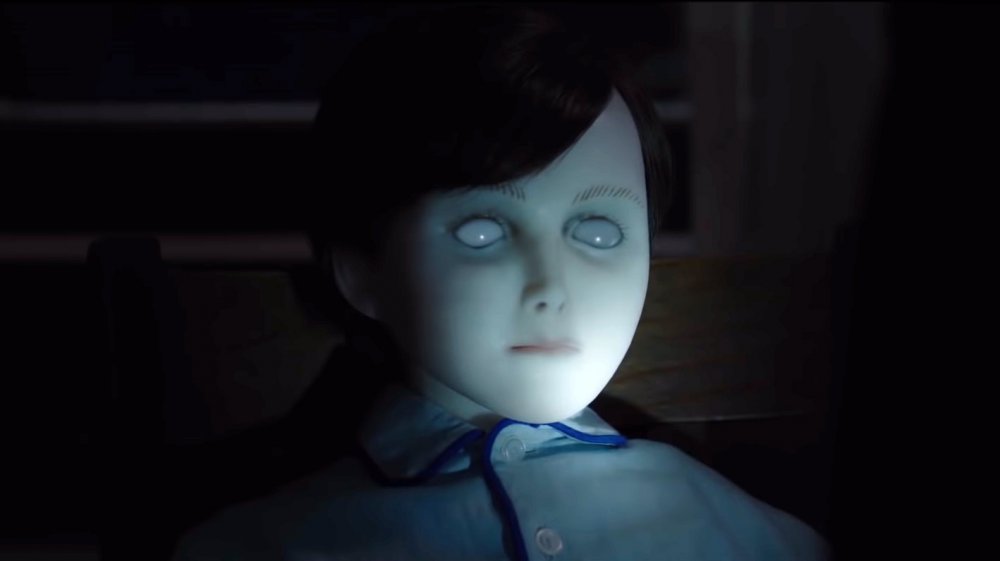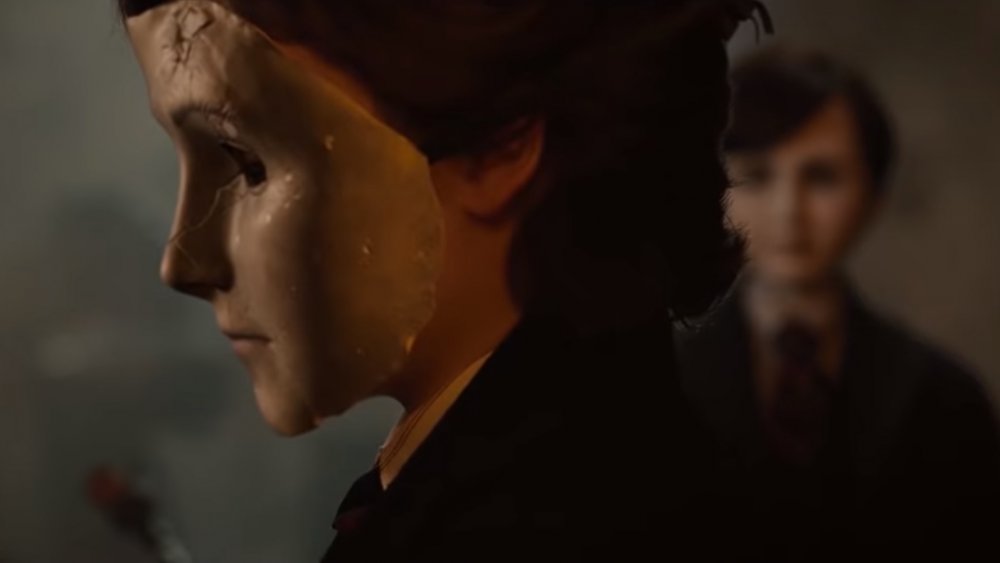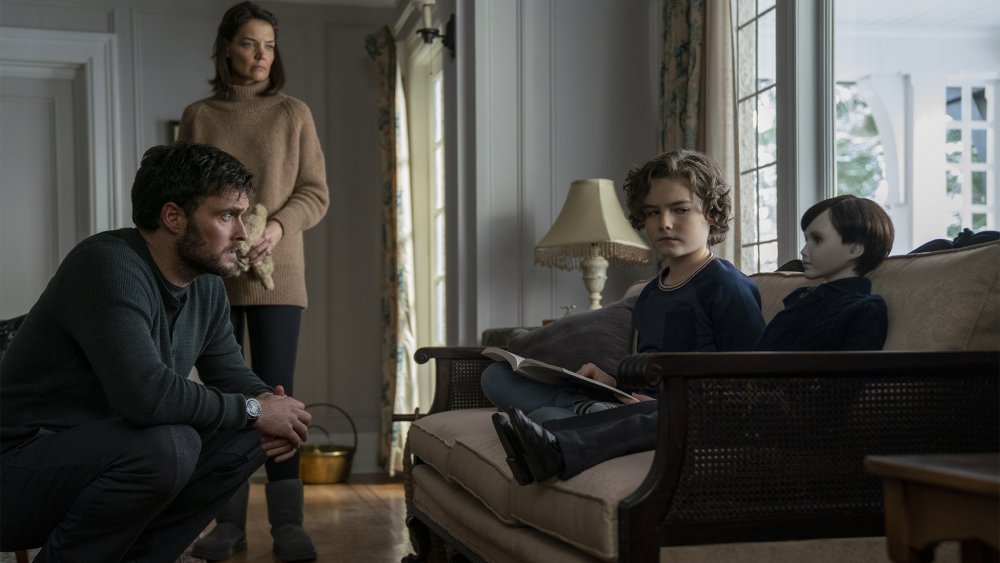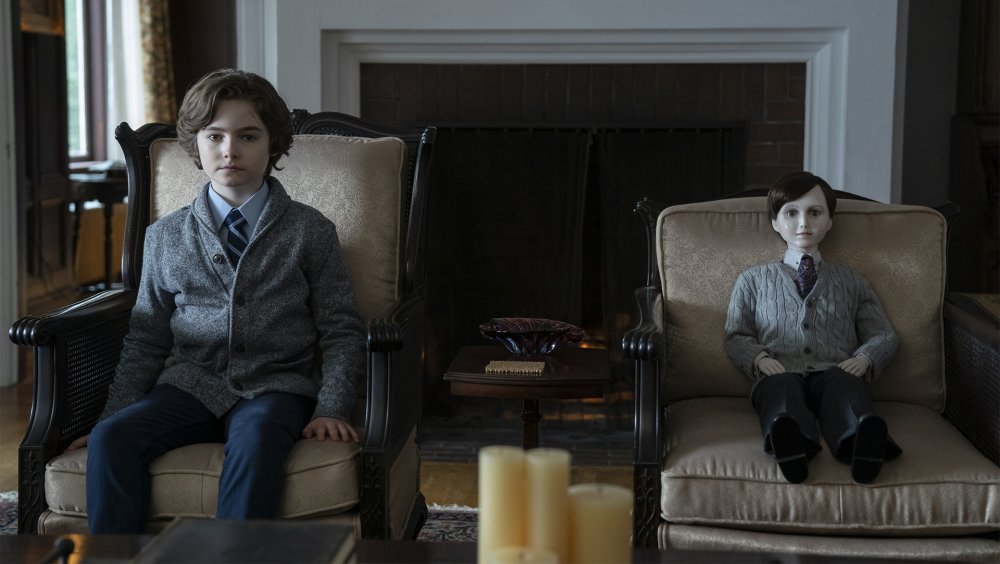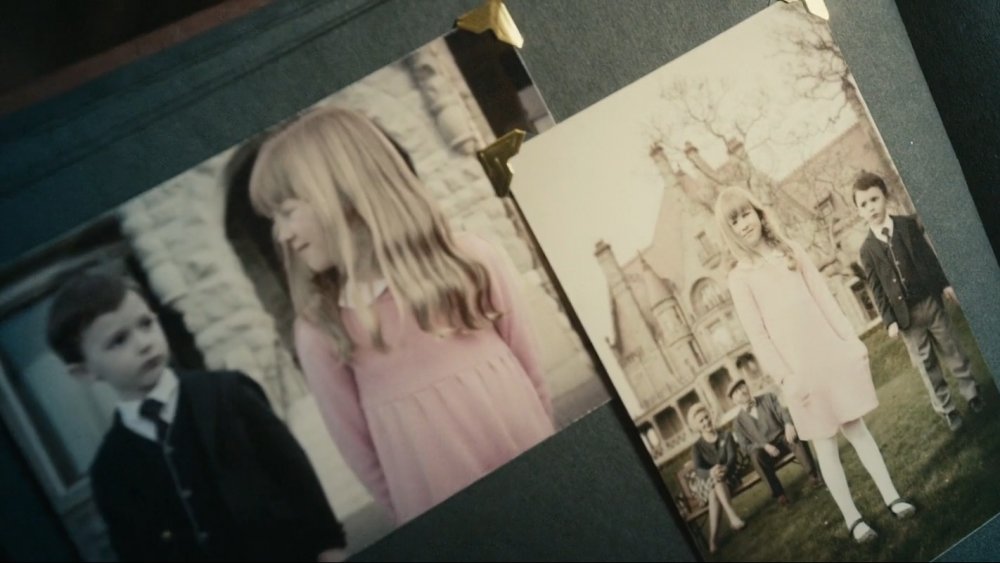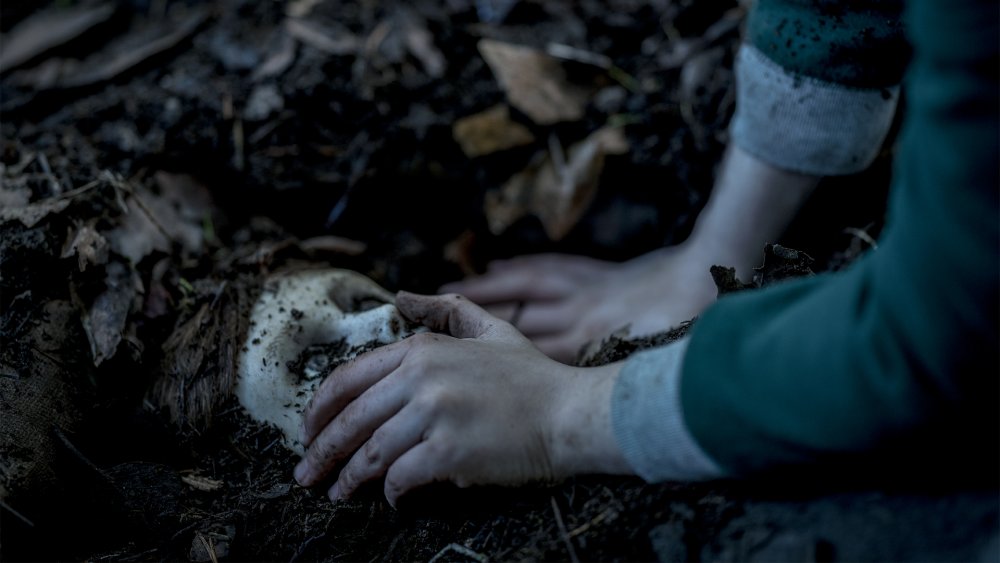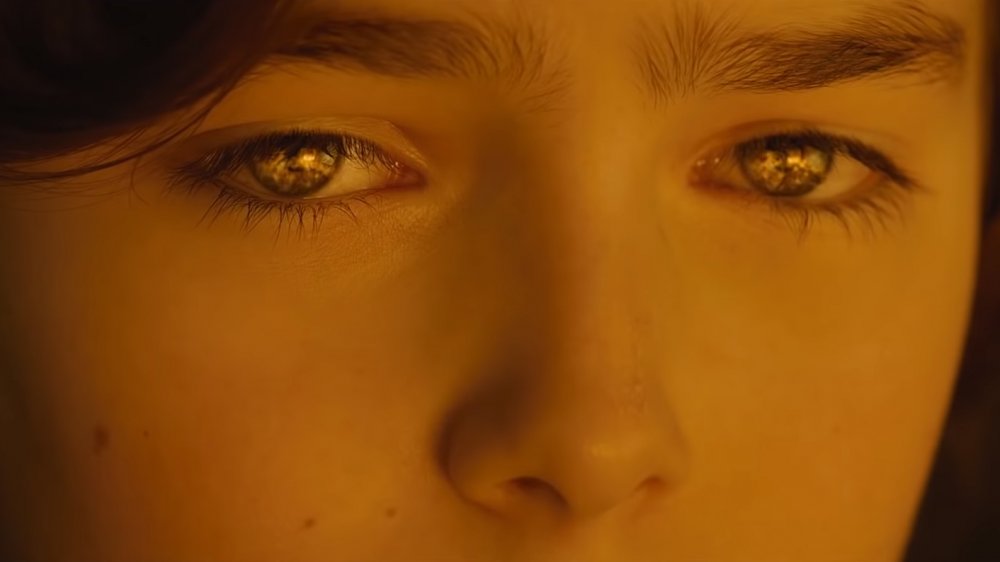The Ending Of Brahms: The Boy II Explained
2016's The Boy was a middling horror flick redeemed by one heck of a surprise ending. After spending most of its runtime convincing both its characters and the audience that the movie's creepy doll, Brahms, was possessed by the spirit of a dead child, The Boy pulled out the rug from under everyone: The doll really was just a doll. The film's real villain was the real-life Brahms Heelshire, who didn't actually die but hid in the walls of his family's home for decades, living vicariously through the porcelain plaything.
It's a delightfully absurd and oddly elegant twist, and Brahms: The Boy II desperately wants to recapture the same magic. As the title implies, Brahms — the doll, not the man — has somehow returned for the sequel, and a lot of the movie hinges on that mystery. After all, we saw the original Brahms die at the end of The Boy, so who's behind this new set of supernatural shenanigans?
Brahms: The Boy II eventually offers an answer, and ends with a series of twists so ludicrous that they make the original look downright pedestrian. Do you have questions? Because we certainly do. A lot of them.
What is Brahms, exactly?
For better or worse, Brahms: The Boy II completely undoes The Boy's ending. The sequel wastes no time showing us that, despite what The Boy said, Brahms is much, much more than a porcelain doll. Almost as soon as he appears, Brahms begins moving of his own free will. He tells his new companion, the young trauma victim Jude, things that the kid couldn't possibly know. He flips over tables and rips up teddy bears.
However, it's not until the end of Brahms: The Boy II that we learn the whole truth. As Jude's mother Liza, played by Katie Holmes, learns, the porcelain doll is the host for a malevolent entity that has been tearing families apart for centuries. Typically, a child adopts the doll, then commits a heinous murder. When questioned about their crimes, the kids have a simple answer: the doll made them do it. The human Brahms was one of the creature's victims. So is Jude, so is Ralph Ineson's sinister "groundskeeper" Joseph, and countless others.
At the end of Brahms: The Boy II, we even see Brahm's real face after Jude's dad, Sean, smacks the doll with a croquet mallet. Instead of shattering, the porcelain falls away to reveal a pint-sized Lovecraftian horror lurking underneath. Jude ends up throwing the the doll in the fire, but that's not the end of Brahms. As it turns out, evil toys aren't that easy to kill.
More than just a kid in a mask
Brahm's true nature isn't actually Brahms: The Boy II's final reveal. After Jude, Sean, and Liza return to London, presumably recovered from the home invasion that made them flee to the Heelshires' old estate, the film unleashes a final twist. Alone in his room, Jude puts on a porcelain mask modeled after Brahm's face and looks in the mirror. Jude thinks Brahms will be very happy in his new home, he says — as long as Jude's parents remember to follow the rules.
If you're not sure what's happening here, recall Joseph's big info dump a little earlier. Brahms knew that Jude was coming. He told Joseph to bury the doll where Jude could find him. Joseph also says that Brahms and Jude will soon "become one." The implication seems to be that Brahms knew that his doll body would be destroyed and made plans to possess Jude, and is now cohabitating in Jude's body and mind.
During Brahms: The Boy II's climax, when Jude is pointing the shotgun at Liza, the possession might've already taken place. It's clearly Brahms, not Jude, who's really speaking. When Sean smacks the doll, Jude seems to wake up, as if he was previously in a trance. Of course, there's another possible reading — maybe Brahms really is gone, and poor, mentally fragile Jude has simply developed a split personality based on the creature — but either way, Brahms lives on through the boy.
For Brahms, it's all about family
So now we know what Brahms does, but what does he want? Quite simply, to be loved. In The Boy, Brahms forces the Heelshires and, later, Lauren Cohen's nanny, Greta, to follow a strict set of rules. The rules aren't malicious, though. They're simple. Brahms wants to listen to music at a certain time of day. He wants to be part of family meals. He wants a kiss goodnight.
In Brahms: the Boy II, Brahms makes Liza, Jude, and Sean follow similar rules. In both movies, he only lashes out when he's ignored or abused or when people threaten to separate him from his loved ones. As long as Brahms is treated with love and respect, he's docile. There has to be a reason why Brahms only latches on to families, after all. He wants to be part of one, and he'll stop anyone who gets in his way.
This probably explains why Brahms gives up on killing Sean and Liza, too. As Liza says while pleading for her life, what's a family without a mother? She (or possibly Jude) must've convinced Brahms that he'd be happier with a complete familial unit, at least at first. After all, if things go sideways, Brahms knows how to deal with things.
But maybe young Brahms isn't all that bad
Sure, he's a creepy doll, tiny demon, and serial killer, but hidden in the two The Boy movies is the implication that maybe, just maybe, Brahms can also function as a force for good. See, Brahms tends to latch on to trauma victims. In the first movie, Greta is rattled by an abusive relationship and mourning a miscarriage. Brahms: The Boy II opens with a home invasion that leaves Liza a paranoid wreck and traumatizes Jude so badly that he won't even speak.
Joseph says that Brahms likes to prey on the mentally weak, but ironically, all of the characters actually get better through their association with Brahms, not worse. Greta essentially adopts the doll once she realizes (correctly, we know in hindsight) that he's alive, using him as a surrogate for the child she lost. In fact, in The Boy, the doll isn't even the bad guy. The real-life Brahms Heelshire is.
The trend continues in Brahms: The Boy II. Jude regains his ability to speak thanks to his bond with Brahms, and comes to rely on Brahms as a source of protection. After her encounter with Brahms, Liza learns how to stick up for herself. She gets her family back, and her nightmares and panic attacks disappear. Brahms might have a violent streak, but it turns out that he's also a pretty good therapist. Just don't make him angry.
The fate of Emily Cribbs, explained
Brahms: The Boy II's big retcon explains the original movie's biggest unanswered question: Why did Brahms Heelshire kill his best friend in the first place? According to The Boy, Brahms and a young girl named Emily Cribbs were close friends who played together all the time. Unfortunately, Emily was murdered when Brahms was eight, and the boy was the prime suspect. In order to protect their son, the Heelshires faked Brahms' death in a fire and hid him the walls of their house, where he lived for over two decades.
But The Boy never says why young Brahms decided to get rid of Emily. The implication is that Brahms was crazy even before he was burned alive, but thanks to Brahms: The Boy II, we now have a much more satisfying explanation. It wasn't Brahms Heelshire's idea to kill Emily at all. It was the entity lurking inside that sinister doll who wanted her dead. Like Jude, Brahms was just the creature's instrument.
Brahms: The Boy II even gives us a motive: the demon, or whatever it is, gets jealous very easily when anyone comes between him and his prey. If Brahms and Emily were such good friends — and going by the photos that Greta finds, they were — the creature probably wanted Emily out of the way so he could have Brahms all to himself. Poor Emily. The girl never stood a chance.
A time-tested horror franchise tradition
There's no way around it: No matter what you might think about Brahms: The Boy II, the way it completely retcons The Boy's ending is kind of a bummer. Sure, there's something to be said for symmetry. The Boy played with the audience's expectations by revealing that the doll wasn't actually possessed, so making the "normal" Brahms turn out to be for-real haunted is a nice mirror image. Still, The Boy worked well on its own. It didn't need to be more complicated.
At least Brahms: The Boy II isn't alone in this regard. By this point, revealing a bigger bad behind the original movie's big bad is a horror sequel staple. In Friday the 13th, the villain is Jason Voorhees' mother. It's not until Friday the 13th Part 2 that Jason himself takes center stage. In Psycho 2, Norman Bates' mother — his real mother, not his adopted one — turns out to be the film's real killer. Scream 3 reveals that the real mastermind behind everything that happened in the franchise is Sidney's cousin, a character that didn't even appear until the third installment.
By making the doll, not Brahms Heelshire, the source of all evil in The Boy universe, writer Stacey Menear (who penned the script for both movies) is really just sticking to tradition. No, that doesn't make the retcon easier to swallow, but at least there's a good precedent for this sort of thing.
Where does the Boy franchise go from here?
The Boy was clearly designed as a one-and-done. By the time the movie is over, the bad guy is dead. The heroes have escaped. The doll is just a doll. There really isn't anywhere else to go.
That's fine for a single movie, but if you're trying to build a series it's a non-starter. Brahms: The Boy II might've sacrificed a lot of the original's charm in order to set up future installments of the Boy franchise, but now that the work is done the series could go anywhere. The most obvious place to take Brahms: The Boy II's sequel would be to follow Jude in his creepy porcelain mask as he comes a real killer.
The Boy could also look backwards. As Brahms: The Boy II established, Brahms has been causing havoc for hundreds of years. Plenty of families succumbed to Brahms' whims before the Heelshires. Lakeshore Entertainment could pump out prequels for years. On the other hand, maybe keeping it simple is best. Just have another unsuspecting family find a creepy doll out in the woods. Trouble is almost certain to follow.
